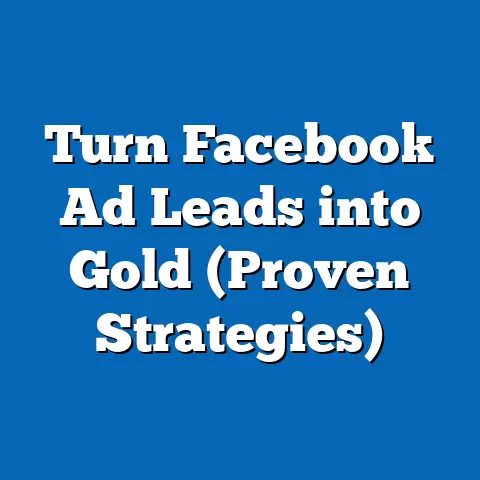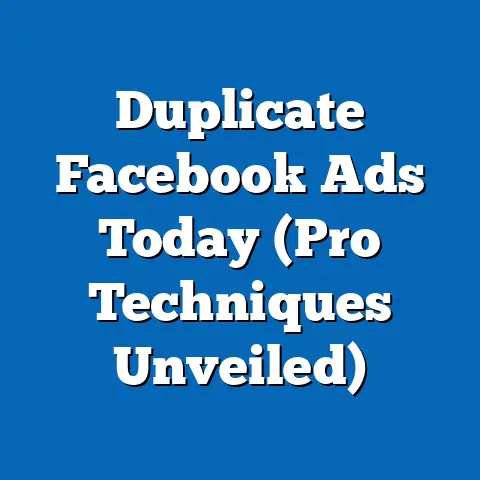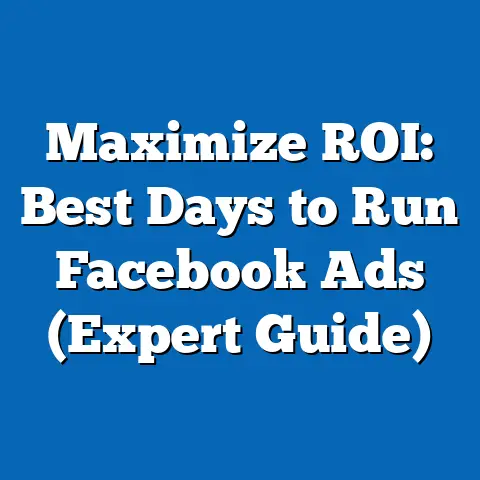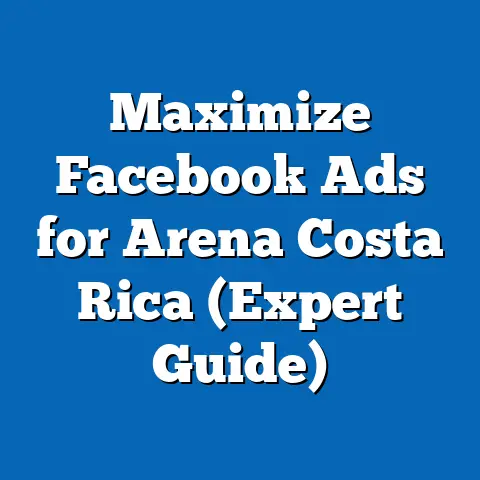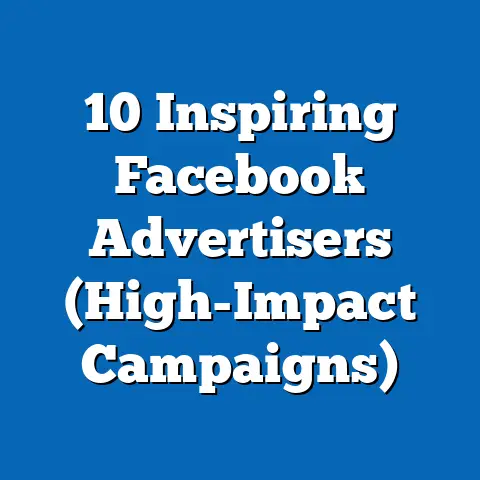Boost CPC on Facebook Ads (Proven Strategies Inside)
In the ever-evolving world of digital marketing, standing still is akin to falling behind. I’ve seen this firsthand over my years in the industry. One platform that demands constant attention and adaptation is Facebook Ads. It’s a powerful tool, but its effectiveness hinges on understanding its nuances and, crucially, keeping a close eye on your Cost-Per-Click (CPC). Think of CPC as the pulse of your campaign; a healthy pulse means a vibrant, thriving campaign, while a weak pulse signals trouble. That’s why mastering strategies to improve your CPC is vital for any business looking to succeed on Facebook.
Why is this so important? Because in today’s hyper-competitive digital landscape, simply throwing money at ads isn’t enough. You need to be smart, strategic, and innovative. Innovative strategies are the key to unlocking better CPCs, which ultimately translates to a higher return on your investment (ROI) and more significant business growth.
Understanding CPC and Its Importance
Let’s start with the basics: what exactly is CPC? In the realm of Facebook Ads, Cost-Per-Click (CPC) is the amount you pay each time someone clicks on your ad. It’s a fundamental metric because it directly reflects how efficiently you’re acquiring traffic to your website or landing page.
But why is CPC such a critical Key Performance Indicator (KPI) for digital marketers? The answer is simple: it directly impacts your overall Return On Investment (ROI). A lower CPC means you’re paying less for each visitor, allowing you to stretch your advertising budget further and potentially acquire more customers at a lower cost. Conversely, a high CPC can quickly drain your budget and leave you with little to show for it.
I remember one campaign I ran for a local bakery. We initially saw a decent number of clicks, but the CPC was through the roof. After some digging, we realized our targeting was too broad, and our ad creative wasn’t resonating with the audience. By refining our targeting and revamping the ad copy, we managed to slash the CPC by over 40%, resulting in a significant boost in website traffic and online orders.
Several factors can influence your CPC on Facebook. Understanding these factors is the first step toward optimizing your campaigns:
- Ad Relevance: Facebook rewards ads that are relevant to the target audience. A higher relevance score typically leads to a lower CPC.
- Targeting Options: The narrower and more specific your targeting, the higher the potential CPC, especially if you are targeting a niche audience that many advertisers are vying for.
- Competition: The level of competition in your industry or target audience can significantly impact CPC. Highly competitive niches often result in higher bidding costs.
- Bidding Strategies: Whether you choose automatic or manual bidding can also affect your CPC. Automatic bidding lets Facebook optimize your bids, while manual bidding gives you more control but requires careful monitoring.
- Ad Quality: Visually appealing and engaging ads tend to perform better, attracting more clicks and potentially lowering CPC.
- Placement: Where your ad appears (e.g., Facebook feed, Instagram feed, Audience Network) can influence its CPC.
Ultimately, the goal of any Facebook advertising campaign should be to align your CPC with your overall business objectives. Whether you’re aiming for brand awareness, lead generation, or sales conversions, understanding how CPC fits into the bigger picture is crucial. It’s not just about getting cheap clicks; it’s about getting valuable clicks that contribute to your bottom line.
Takeaway: CPC is a critical KPI that directly impacts your ROI. Understanding the factors that influence CPC is essential for optimizing your Facebook Ads campaigns.
Proven Strategies to Boost CPC
Now, let’s get to the heart of the matter: how can you actually boost your CPC on Facebook Ads? Here are some proven strategies that I’ve used successfully over the years:
Improve Ad Relevance and Quality Score
Facebook’s algorithm prioritizes ads that are relevant and engaging to users. This is reflected in your Quality Score, which is a metric that assesses the overall quality and relevance of your ad. A higher Quality Score can lead to lower CPCs and better ad performance overall.
So, how do you improve your ad relevance and Quality Score? Here are some actionable tips:
- Craft Compelling Visuals: High-quality, eye-catching visuals are essential for grabbing attention in the crowded Facebook feed. Use professional-looking images or videos that are relevant to your product or service. Avoid generic stock photos; instead, opt for authentic visuals that showcase your brand’s personality.
- Write Strong Ad Copy: Your ad copy should be clear, concise, and persuasive. Highlight the benefits of your product or service and address the pain points of your target audience. Use strong verbs and active voice to create a sense of urgency.
- Include a Clear Call to Action (CTA): Tell users exactly what you want them to do. Use clear and direct CTAs like “Shop Now,” “Learn More,” “Sign Up Today,” or “Get a Free Quote.” Make sure your CTA aligns with your overall campaign objective.
- Match Ad Creative to Landing Page: Ensure that your ad creative is consistent with the content and messaging on your landing page. If users click on an ad promising a discount, they should be taken to a landing page where they can easily redeem that discount.
- Target the Right Audience: As I’ll discuss later, precise targeting is crucial for ad relevance. Make sure you’re showing your ads to people who are genuinely interested in your product or service.
I recall a campaign I worked on for an e-commerce store selling handmade jewelry. Initially, we used generic product photos and broad ad copy. The results were underwhelming, with a high CPC and low conversion rate. After revamping the ad creative with lifestyle shots showcasing the jewelry being worn by real people and crafting more targeted ad copy that spoke to the unique qualities of handmade jewelry, we saw a significant improvement in ad relevance and a corresponding drop in CPC.
Takeaway: Improving ad relevance and Quality Score is crucial for lowering CPC. Focus on creating compelling visuals, writing strong ad copy, including clear CTAs, and matching your ad creative to your landing page.
Optimize Targeting Options
Facebook’s targeting capabilities are incredibly powerful, but they can also be a double-edged sword. If you’re not careful, you can end up wasting your budget on irrelevant clicks. That’s why optimizing your targeting options is essential for boosting your CPC.
Here are some strategies for refining your audience segments:
- Demographic Targeting: Use demographic data like age, gender, location, education, and job title to narrow your audience. This can be particularly effective if your product or service is targeted toward a specific demographic group.
- Interest-Based Targeting: Target users based on their interests, hobbies, and pages they’ve liked on Facebook. This allows you to reach people who are genuinely interested in your industry or niche.
- Behavioral Targeting: Target users based on their online behavior, such as purchase history, website visits, and app usage. This can be a powerful way to reach people who are likely to be interested in your product or service.
- Lookalike Audiences: Create lookalike audiences based on your existing customer base or website visitors. Facebook will identify users who share similar characteristics and behaviors with your existing audience, allowing you to expand your reach while maintaining relevance.
- Custom Audiences: Upload your own customer data (e.g., email lists, phone numbers) to create custom audiences. This allows you to target your existing customers with specific offers or promotions.
- Layer Targeting: Combine multiple targeting options to create highly specific audience segments. For example, you could target women aged 25-34 who are interested in yoga and have recently purchased athletic apparel online.
I once worked on a campaign for a local gym. Initially, we targeted everyone within a 10-mile radius of the gym who was interested in fitness. The results were mediocre, with a high CPC and low sign-up rate. After refining our targeting to focus on people who had recently visited fitness-related websites or expressed an interest in specific types of workouts (e.g., CrossFit, yoga), we saw a significant improvement in ad performance and a corresponding drop in CPC.
Takeaway: Optimizing your targeting options is crucial for reaching the right audience and lowering CPC. Use demographic, interest-based, behavioral, lookalike, and custom audiences to refine your audience segments.
Experiment with Ad Formats
Facebook offers a variety of ad formats, each with its unique advantages. Experimenting with different formats can help you find the one that resonates best with your audience and delivers the lowest CPC.
Here are some popular Facebook ad formats:
- Image Ads: Simple yet effective, image ads are a great way to showcase your product or service with a visually appealing image and compelling ad copy.
- Video Ads: Video ads are highly engaging and can be used to tell a story, demonstrate a product, or share a testimonial.
- Carousel Ads: Carousel ads allow you to showcase multiple images or videos in a single ad unit, making them ideal for showcasing a range of products or features.
- Slideshow Ads: Slideshow ads are similar to video ads but are created using a series of static images. They’re a great option for businesses that don’t have the resources to create video content.
- Collection Ads: Collection ads are designed for e-commerce businesses and allow you to showcase a catalog of products in a visually appealing format.
- Lead Ads: Lead ads make it easy for users to sign up for your email list or request more information without leaving the Facebook platform.
The key is to test and optimize these formats to see which performs best for your specific audience and campaign objectives. Run A/B tests with different ad formats and track your CPC, click-through rate (CTR), and conversion rate to determine which format delivers the best results.
I remember a campaign I ran for a software company. We initially focused on image ads, but the CPC was higher than we’d hoped. After experimenting with video ads that showcased the software’s features and benefits, we saw a significant improvement in engagement and a corresponding drop in CPC.
Takeaway: Experiment with different Facebook ad formats to find the one that resonates best with your audience and delivers the lowest CPC. Run A/B tests to compare the performance of different formats.
Leverage Retargeting Campaigns
Retargeting campaigns are a powerful way to reach users who have previously interacted with your brand, whether it’s by visiting your website, watching your videos, or engaging with your Facebook page. These users are already familiar with your brand and are more likely to convert.
Here are some strategies for effective retargeting:
- Website Retargeting: Target users who have visited specific pages on your website. This allows you to show them ads that are relevant to the products or services they were interested in.
- Engagement Retargeting: Target users who have engaged with your Facebook page or ads, such as liking, commenting, or sharing your content.
- Video Retargeting: Target users who have watched a certain percentage of your videos. This is a great way to re-engage users who have shown an interest in your brand’s content.
- Dynamic Product Ads: If you’re an e-commerce business, use dynamic product ads to show users ads for the specific products they viewed on your website.
The key to successful retargeting is to segment your audiences based on their engagement levels. For example, you could show different ads to users who visited your website but didn’t add anything to their cart versus users who abandoned their cart.
I’ve seen retargeting campaigns consistently deliver lower CPCs and higher conversion rates compared to traditional advertising campaigns. By targeting users who are already familiar with your brand, you’re increasing the likelihood that they’ll click on your ad and take action.
Takeaway: Leverage retargeting campaigns to reach users who have previously interacted with your brand. Segment your audiences based on their engagement levels and show them relevant ads.
Analyze and Adjust Bidding Strategies
Facebook offers a variety of bidding strategies, each with its own advantages and disadvantages. Understanding these strategies and how to adjust them based on your campaign performance is crucial for optimizing your CPC.
Here are some common bidding strategies:
- Automatic Bidding: Also known as “lowest cost” bidding, automatic bidding allows Facebook to automatically optimize your bids to get you the most results for your budget. This is a good option for beginners or for campaigns where you don’t have a lot of data to work with.
- Manual Bidding: Manual bidding gives you more control over your bids, allowing you to set a maximum bid for each click or impression. This is a good option for experienced advertisers who want to fine-tune their campaigns and control their CPC.
- Cost Cap Bidding: This bidding strategy allows you to set a target cost per result. Facebook will then try to get you as many results as possible while staying within your target cost.
- Target Cost Bidding: Similar to cost cap bidding, target cost bidding allows you to set a target cost per result. However, with target cost bidding, Facebook will prioritize getting you results at your target cost, even if it means spending more of your budget.
The best bidding strategy for you will depend on your campaign objectives, budget, and level of experience. It’s important to monitor your campaign performance and adjust your bids accordingly. If you’re using automatic bidding, you may want to switch to manual bidding if you feel like you’re not getting the results you want. If you’re using manual bidding, you may need to lower your bids if your CPC is too high or raise your bids if you’re not getting enough impressions.
Takeaway: Analyze and adjust your bidding strategies to optimize your CPC. Experiment with different bidding options and monitor your campaign performance to see which strategy delivers the best results.
Measuring and Analyzing CPC Performance
Implementing these strategies is only half the battle. You need to constantly monitor and analyze your CPC performance to ensure that your efforts are paying off. Facebook Ads Manager provides a wealth of data that you can use to track your CPC and identify areas for improvement.
Here are some key metrics to track:
- CPC (Cost-Per-Click): The average amount you’re paying for each click on your ad.
- CTR (Click-Through Rate): The percentage of people who see your ad and click on it.
- Relevance Score: A measure of how relevant your ad is to your target audience.
- Conversion Rate: The percentage of people who click on your ad and complete a desired action (e.g., make a purchase, sign up for a newsletter).
- ROAS (Return on Ad Spend): The amount of revenue you generate for every dollar you spend on advertising.
Use these metrics to measure the effectiveness of the strategies you’ve implemented. Are your ads becoming more relevant? Is your CTR improving? Are you seeing a decrease in CPC and an increase in conversion rate?
A/B testing is also crucial for refining your ad campaigns and lowering CPC. Test different ad creatives, targeting options, and bidding strategies to see which combinations deliver the best results. For example, you could run two versions of the same ad with different headlines or images to see which one performs better.
Ultimately, the goal is to use analytics to understand user behavior and optimize your future campaigns based on data-driven insights. By tracking your CPC, CTR, and conversion rate, you can identify patterns and trends that will help you make more informed decisions about your advertising strategy.
Takeaway: Measuring and analyzing your CPC performance is crucial for optimizing your Facebook Ads campaigns. Track key metrics, run A/B tests, and use analytics to understand user behavior and make data-driven decisions.
Conclusion
Boosting your CPC on Facebook Ads is an ongoing process that requires constant attention, experimentation, and adaptation. By implementing the proven strategies I’ve outlined in this article, you can significantly improve your ad performance and achieve better results for your business.
Remember, the key is to:
- Improve Ad Relevance and Quality Score: Create compelling visuals, write strong ad copy, and include clear CTAs.
- Optimize Targeting Options: Use demographic, interest-based, behavioral, lookalike, and custom audiences to refine your audience segments.
- Experiment with Ad Formats: Find the format that resonates best with your audience and delivers the lowest CPC.
- Leverage Retargeting Campaigns: Reach users who have previously interacted with your brand and segment your audiences based on their engagement levels.
- Analyze and Adjust Bidding Strategies: Experiment with different bidding options and monitor your campaign performance to see which strategy delivers the best results.
- Measure and Analyze CPC Performance: Track key metrics, run A/B tests, and use analytics to understand user behavior and make data-driven decisions.
I’ve seen firsthand how these strategies can transform a struggling Facebook Ads campaign into a highly profitable one. It’s not about magic; it’s about understanding the platform, knowing your audience, and being willing to experiment and adapt.
In the ever-evolving landscape of digital marketing, innovation and adaptation are essential for success. By embracing these strategies and staying ahead of the curve, you can unlock the full potential of Facebook advertising and achieve your business goals. So, go out there, implement these strategies, and watch your CPC plummet and your ROI soar! The potential for growth and success through effective Facebook advertising is immense, and I’m confident that you can achieve it with the right knowledge and approach.

